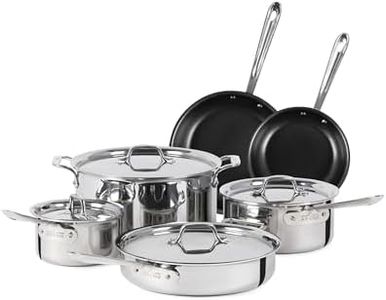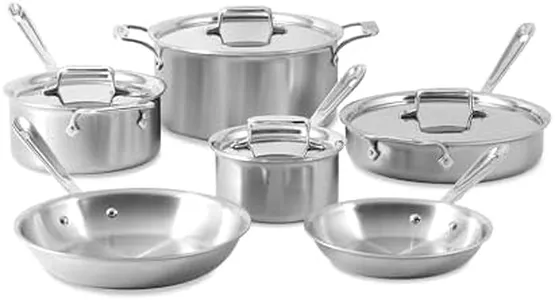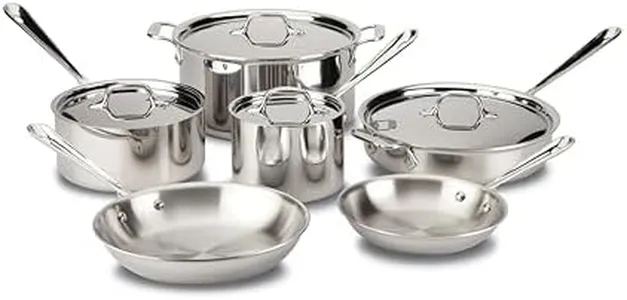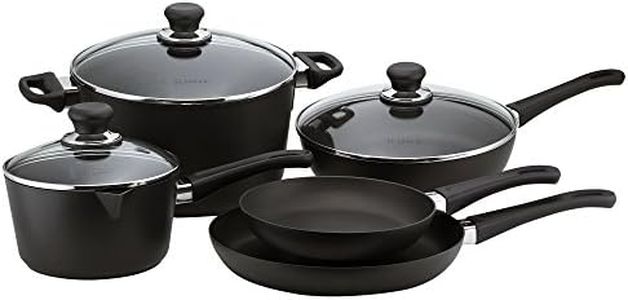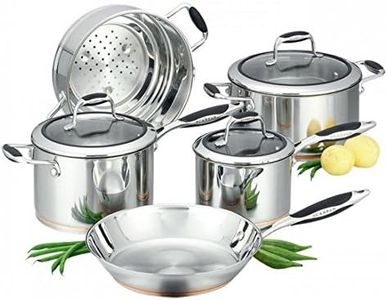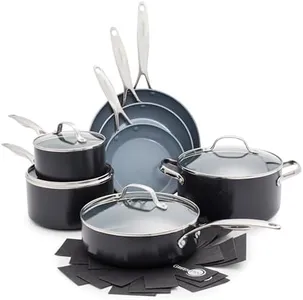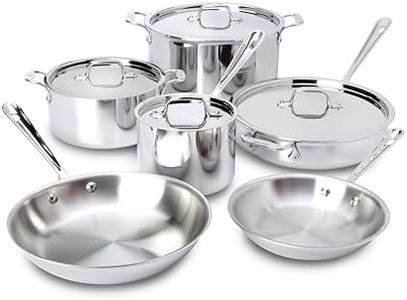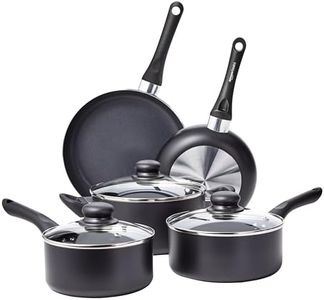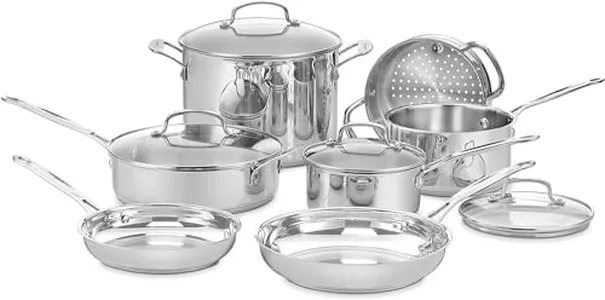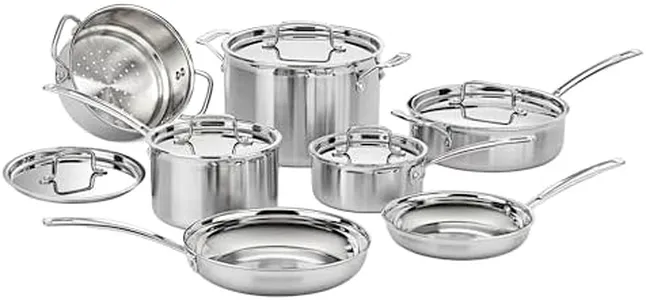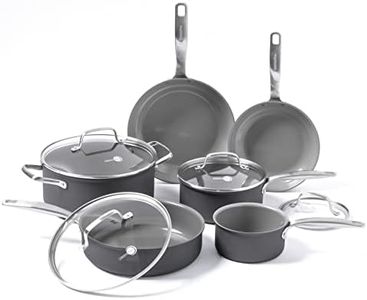We Use CookiesWe use cookies to enhance the security, performance,
functionality and for analytical and promotional activities. By continuing to browse this site you
are agreeing to our privacy policy
10 Best Rated Cookware Sets
From leading brands and best sellers available on the web.Buying Guide for the Best Rated Cookware Sets
Choosing a cookware set can seem overwhelming because there are many different materials, coatings, sizes, and combinations available. The right set will make a big difference in your cooking experience, helping you prepare meals more efficiently and even improve your results. To pick the best cookware for your needs, you'll want to think about how often you cook, what types of food you usually prepare, your stove type, and how much care you're willing to give your cookware. Understanding the key specifications of cookware sets will help you make an informed choice that suits your kitchen and lifestyle.MaterialThe material of cookware sets is crucial because it determines how well the pans heat up, distribute heat, and how easy they are to clean. The most common materials are stainless steel, nonstick-coated aluminum, hard-anodized aluminum, copper, and cast iron. Stainless steel is durable and resists rust, but can have hot spots unless it has an aluminum or copper core. Nonstick aluminum is lightweight and very easy to clean, but it might not be as durable and can’t be used with metal utensils. Hard-anodized aluminum is more robust than regular aluminum and resists scratches. Cast iron holds heat well and develops natural nonstick properties, but it’s heavy and requires more care to prevent rust. Copper heats quickly and evenly, but needs frequent polishing. Your cooking habits should guide you: if you want ease of use and simple cleanup, nonstick might be best; for searing and browning, stainless steel or cast iron are great.
Coating (if any)Cookware can be uncoated or come with a nonstick or ceramic coating. Coating affects both how you cook and clean your pans. Nonstick coatings make cleanup easier and are perfect for low-fat cooking, eggs, and delicate foods but can wear off with time and typically aren’t suitable for very high heat. Ceramic coatings are a newer, more eco-friendly option, also good for easy cleaning. Uncoated pans, like stainless steel or bare cast iron, are harder to clean but allow more browning and flavor development. If you want convenience and healthier cooking with less oil, opt for a nonstick or ceramic coating, but if you love to sauté, brown, or deglaze, consider uncoated options.
Number and Types of PiecesCookware sets are sold with different numbers and types of pieces, from compact 5-piece starter kits to big 15-piece collections. The pieces typically include a mix of fry pans, saucepans, stockpots, and sometimes specialty items. More pieces give you versatility, but only if you'll use them. Compact sets are perfect for small kitchens or if you cook simply, while larger sets are better for families or adventurous cooks. Always check if the set provides the pans and sizes you’ll really use, rather than just a high piece count.
Oven and Dishwasher CompatibilityMany people overlook whether cookware can go in the oven or dishwasher. Oven-safe cookware allows you to finish dishes in the oven or keep food warm, while dishwasher-safe cookware simplifies cleanup. The level of heat resistance varies—some sets are safe only up to a certain oven temperature. If you like recipes that move from stovetop to oven, or want maximum convenience, check these features. Confirm the maximum oven temperature and if all parts, including lids, are safe for dishwasher or oven use.
Lid Material and HandlesLids can be made of glass or metal, and the material affects visibility and durability. Glass lids let you watch your food without lifting the lid and letting heat escape, but they can break if dropped. Metal lids are tougher but obscure your view. Similarly, handles can be metal, plastic, or silicone-coated; metal ones are generally more durable but may get hot, while plastic or silicone stays cooler but might not be oven safe. Choose based on how often you want to monitor your cooking and whether you’ll move pans between oven and stovetop.
Compatibility with StovetopsNot all cookware works with all stovetops. For example, induction stovetops only work with pots and pans made of magnetic metals like certain stainless steel or cast iron. Glass, ceramic, and traditional electric stoves work with most types, but some nonstick coatings or lightweight pans can warp on high heat. If you have a standard gas or electric stove, you have more freedom, but induction users must double-check compatibility. Always make sure your cookware is labeled as suitable for your stove type.
Weight and BalanceHow heavy a pan is affects how easy it is to use and maneuver. Heavier pans like cast iron hold heat well and cook evenly, but can be hard to handle, clean, or lift—especially for people with limited strength or if you often cook large meals. Lighter pans are easier to maneuver but might heat unevenly. A good balance in the hand and comfortable handles are also important, especially for tasks like tossing vegetables or pouring sauces. Test how a pan feels if you can—choose one that feels comfortable for your everyday cooking needs.
